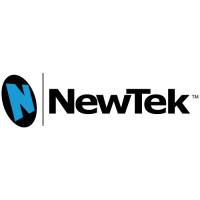Page | 177
17.6.1 ON DEMAND OR LIVE STREAMING?
Not all ‘streaming’ is ‘live streaming.’ The difference is similar to i) watching a television program you
previously recorded at a time convenient for you, or ii) watching a live event.
On demand streams are stored on a server (often supplied by an external service provider), ready to be
transmitted whenever a viewer wishes. Live streams are available at the time they are broadcast, such as
during a live concert or event.
ON DEMAND HOSTING
TriCaster permits you to record live productions to a local hard drive. The resulting files can be hosted on a
network later, so viewers can connect whenever they like. If you have the resources available, you can host
the video yourself – but if many people will likely want to view your production, you will likely avail yourself
of a service to stream it on your behalf.
Ideally, ‘on demand’ streaming video begins to play on request after a few moments. (Letting the stream get
a bit ahead of the client playback device is called ‘buffering’, and helps ensure smooth playback). This stands
in contrast to other types of online video distribution which requires the viewer to completely download the
video file before he can begin play. Given a sufficiently high speed connection between host and viewer, they
may well be able to enjoy a seamless viewing experience without stuttering or other issues.
LIVE STREAMING
Live streaming is a growing international market, and one you may well wish to serve. This form of streaming
is a somewhat more demanding implementation. Rather than record a file and deal with it later, live video
is transmitted over the network (effectively in realtime, give or take a little ‘time in the pipe’ as it were.)
Delivering a good quality stream requires that you consider both your network connection capabilities and
that of your viewers. As well, to ensure reliable delivery, you will ideally have some idea of the size of your
audience. Nevertheless, for all cases, TriCaster gives you the tools to do the job.
Naturally, streaming video is highly compressed to reduce bandwidth demands and make it available to a
wider group. TriCaster supports two popular and prolific encoding systems, Microsoft’s Windows Media®
and RTMP (Adobe Flash®).
The decision as to which encoding format to use for your live stream is up to you or – in some cases – your
client. Here are some things to consider:
Some corporate and institutional network administrators opt to support one or another format
exclusively. (Check with your IT department to find out if this affects your decision).
RTMP and RTSP combined have a very wide installed user base, and work well across multiple
platforms (PCs, Macs, Linux, etc.).
Windows Media® is well represented, but perhaps not to the same degree.
BANDWIDTH CONSIDERATIONS
You’ll often hear the term ‘bitrate’ in connection with streaming. This expression refers to data throughput
per second (generally measured in Kilobits per second, or Kbps.) You could think of this as being like water

